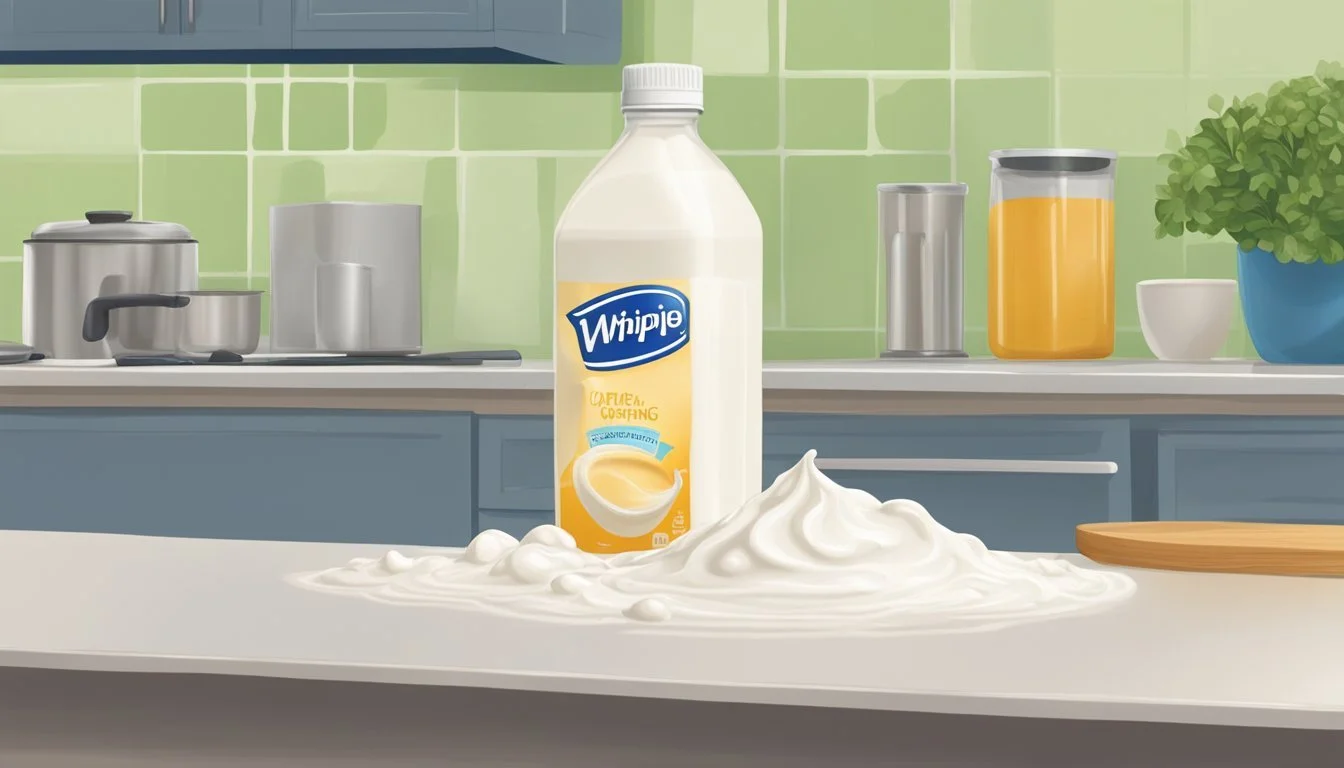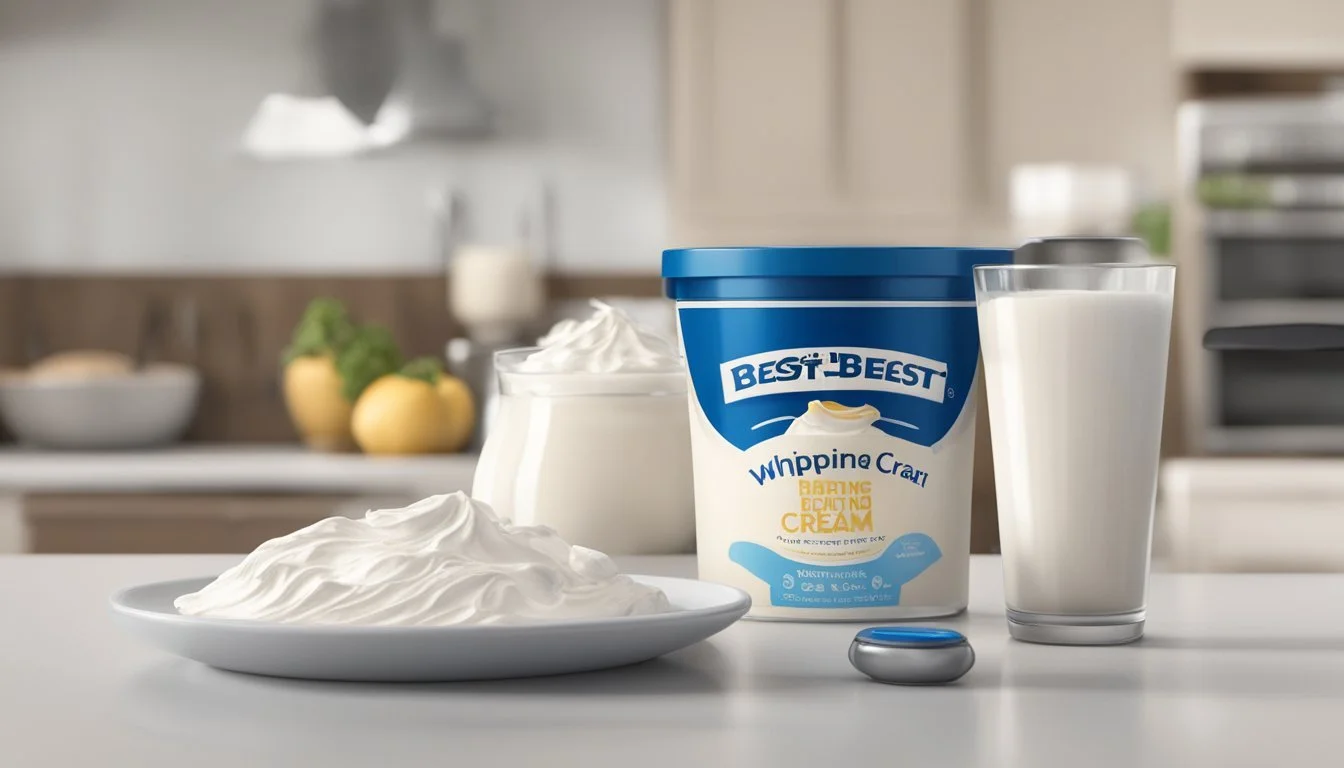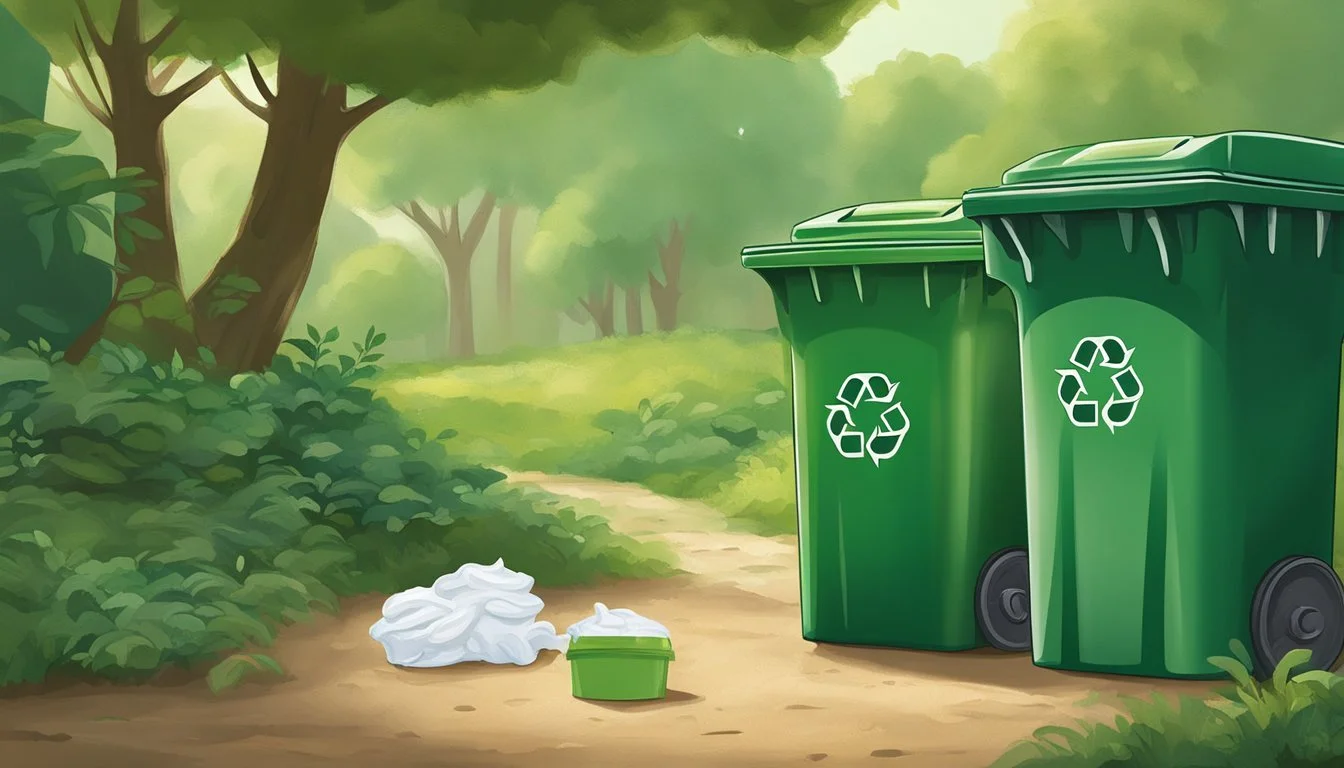Does Whipping Cream Go Bad?
Signs and Storage Tips
Does whipping cream go bad? The short answer is yes, like all dairy products, whipping cream can spoil. Its high fat content provides an ideal environment for bacteria if not stored correctly.
Unopened heavy cream can last several weeks past the expiration date when kept in the refrigerator. However, once opened, both homemade and store-bought whipped cream have shorter shelf lives, ranging from a few days to several weeks, depending on storage conditions.
Indicators of spoiled whipping cream include changes in color, texture, and smell. It's essential to store your cream appropriately and check these signs to ensure it's still safe to use.
Understanding Whipping Cream
Whipping cream is a versatile dairy product that is highly valued in both cooking and baking. It is characterized by its high milk fat content, enabling it to be whipped into a light, fluffy texture.
Defining Whipping Cream
Whipping cream is derived from milk by separating the high-fat cream from it. This separation process results in a product with a milk fat content between 30% and 36%. There are different types, including heavy cream and heavy whipping cream, which have slightly varying fat contents. Heavy cream usually contains about 36% fat, while heavy whipping cream typically has around 30-35% fat. Its rich, creamy texture makes it ideal for a variety of culinary applications.
Typical Uses for Whipping Cream
Whipping cream is commonly used in desserts, where it can be whipped into toppings for cakes, pies, and other sweets. It is also a key ingredient in making mousse, ice cream, and pastry fillings. In baking, it adds moisture and richness to cakes and scones. Besides desserts, whipping cream is often used in sauces and soups to provide a creamy consistency. It can also enhance coffee, adding a rich, velvety texture. In various cooking applications, it is used to create rich dishes such as Alfredo sauce or to finish a creamy soup.
By understanding these core aspects, one can better appreciate why whipping cream is a staple in many kitchens.
Shelf Life and Storage Guidelines
Whipping cream, like other dairy products, requires proper handling to maintain its quality. Its shelf life varies depending on several factors including whether it is opened or unopened, as well as storage conditions.
Determining Shelf Life
Unopened whipping cream often retains its best quality for about 1-2 weeks past the printed date. This period can extend if the product is ultra-pasteurized.
Opened cartons should be consumed within 7-10 days. Homemade whipped cream typically lasts for about 3 days.
Aerosol whipped cream can last 2-3 weeks unopened, but post-opening, it stays fresh for usually 2 weeks in the refrigerator. Using an airtight container can help preserve its freshness for a longer period.
Optimal Storage Practices
To maximize shelf life, store whipped cream at a consistent temperature in the back of the fridge, where it's coldest. Avoid the fridge door as it experiences temperature fluctuations.
If the lid is damaged or loose, transfer the cream to an airtight container. This helps maintain its quality and prevents it from absorbing other flavors.
For long-term storage, some recommend freezing whipped cream. Freeze in air-tight containers or with a firm seal to prevent ice crystal formation. This method, however, might slightly alter the texture upon thawing. Always discard whipping cream if it shows signs of spoilage such as an off smell or taste.
Recognizing Spoiled Whipping Cream
Fresh whipping cream should have a pleasing, slightly sweet taste and smooth consistency. To identify spoiled whipping cream, check for changes in appearance, smell, and taste.
Visible Signs of Spoilage
Visible indicators are the easiest to spot.
Curdling: When cream curdles, it forms lumps or separates into a watery part and a thicker part.
Discoloration: Fresh cream is white or creamy in color. Spoiled cream may turn yellow, gray, or display other unusual colors.
Mold Growth: Any sign of mold—in colors such as green, blue, or black—indicates spoilage due to bacterial activity and should not be consumed.
These visible signs are essential for determining whether your whipping cream has gone bad.
Odor and Taste Indicators
Using your senses can also help.
Sour Smell: Fresh whipping cream has a mild, neutral aroma. A sour smell is one of the primary odors that indicate spoilage.
Off Taste: Fresh cream tastes slightly sweet and rich. If it tastes sour, bitter, or has an off-putting flavor, it signifies that the cream has spoiled.
Paying attention to these odor and taste indicators can prevent the consumption of potentially harmful spoiled cream that could lead to foodborne illnesses.
Preservation Techniques
Whipping cream's shelf life can be extended significantly through proper preservation methods. Freezing and refrigerating correctly are crucial to maintaining its freshness and quality.
How to Properly Freeze Whipping Cream
To freeze whipping cream effectively, it's essential to use an airtight container. This prevents air from degrading the quality. Pour the cream into the container, leaving some space at the top for expansion. Labeling with the date is advised.
When ready to use, thaw the whipping cream slowly in the refrigerator. This approach maintains its consistency. The cream should be consumed within a few days after thawing. Note that frozen cream may not whip as well due to fat separation but can still be used for cooking.
Extending Freshness After Opening
Once opened, whipping cream should remain refrigerated to prevent spoilage. Storing it in the coldest part of the fridge, rather than the door, helps maintain a stable temperature.
Using a tightly sealed, airtight container also helps. Avoid cross-contamination by always using clean utensils. If signs of spoilage such as sour smell or unusual texture appear, it's best to discard the cream.
To extend its freshness further, avoid leaving it out at room temperature for extended periods.
Health and Safety Considerations
Maintaining the quality of whipping cream involves understanding preservative processes and safe consumption practices. Not adhering to food safety guidelines can lead to serious health risks.
Understanding Pasteurization
Pasteurization is a crucial technique for ensuring the safety of dairy products. It involves heating cream to a specific temperature to kill harmful bacteria like Salmonella, E. coli, and Listeria.
Most whipping cream available in the grocery store is pasteurized. This process helps extend the shelf life of dairy products and reduces the risk of foodborne illnesses. Consumers should always check the label for the pasteurized mark when purchasing. Despite pasteurization, proper storage is essential to maintain the cream's freshness.
Proper Handling and Consumption
Correct handling of whipping cream helps prevent spoilage and food poisoning. It should always be refrigerated at or below 40°F (4°C). Once opened, the cream should be used within a week or according to the manufacturer's guidelines.
Any signs of spoilage, such as sour odor, off-putting taste, or lumpy texture, indicate that the cream should not be consumed. Cross-contamination can also pose a risk; always use clean utensils when handling.
Ensuring equipment like mixers and bowls are clean before use prevents bacterial growth. Prioritizing food safety minimizes health risks related to spoiled dairy products.
Making the Most of Whipping Cream
To maximize the potential of whipping cream, it's essential to explore creative recipes as well as master the techniques for achieving perfect consistency and peaks.
Creative Recipes and Uses
Whipping cream is incredibly versatile. It can be transformed into homemade whipped cream with a rich, creamy texture that complements desserts like pies and cakes. Adding a bit of gelatin can help stabilize it, making it last longer.
In savory dishes, its high fat content enriches sauces and soups. Recipes like Fettuccine Alfredo and creamy soups benefit from its smooth consistency and ability to bind flavors together.
For a quick and easy dessert, consider Cool Whip or other whipped toppings for a lighter, less dense option. These products are convenient and keep for extended periods when stored correctly. Always ensure they are used before the recommended expiration dates for the best quality.
Tips for Perfect Consistency and Peaks
Achieving the ideal consistency and stiff peaks requires proper technique. Start with cold equipment; chill the bowl and beaters before whipping the cream. Using heavy cream with a fat content of 36% or higher is crucial for a stable, fluffy result.
Whipping at medium-high speed helps aerate the cream, forming peaks that stand up straight. For added stability, incorporate stabilizers like confectioner's sugar or gelatin to maintain the texture longer.
Avoid over-whipping, as it can turn the cream grainy. Watch closely and stop the mixer once the desired fluffy peaks are formed. If seeking a sweet element, gradually add sugar during whipping for an evenly distributed flavor.
These tips and ideas ensure that whipping cream is optimally utilized in both sweet and savory dishes.
Different Types of Cream and Their Lifespans
Different cream varieties have unique storage needs and lifespans. Understanding these nuances can help preserve freshness and optimize usage.
Comparing Whipping Cream to Other Varieties
Whipping cream, also known as light whipping cream, typically has a milk fat content of 30-36%. When stored in an unopened container in the refrigerator, it can last for up to two weeks past the printed date. Once opened, it should be used within 5-7 days.
Heavy cream, which has a higher fat content of around 36-40%, can remain fresh for slightly longer. Unopened heavy cream can last up to two weeks in the refrigerator, while opened heavy cream is best used within 5-10 days. Aerosol whipped cream, while convenient, typically lasts about two weeks after opening before the propellant affects its texture.
Shelf Life Variations Based on Fat Content
The fat content in cream significantly impacts its shelf life. Creams with higher fat content, such as heavy cream, are generally more stable and can be stored for longer periods.
For example, cream with 36-40% milk fat can maintain quality in an unopened container for up to three weeks. Sour cream and cream cheese, both made through fermentation, have different lifespans. Sour cream, with about 20% fat, lasts 1-3 weeks in the refrigerator, while cream cheese can stay fresh for up to a month.
Ultra-pasteurized creams, which are treated at higher temperatures, often have an extended shelf life compared to regular pasteurized creams. Storing any cream in the coldest part of the refrigerator, rather than the door, can further help maintain freshness.
Proper Disposal and Environmental Considerations
When whipping cream turns bad, it's important to discard it responsibly. Giving thought to reducing food waste can also positively impact the environment.
Disposing of Spoiled Cream
Spoiled whipping cream can create unpleasant odors and attract pests if not disposed of properly. Start by pouring the bad cream into a sealed container or bag to prevent leaks and spills.
Avoid pouring spoiled cream down the drain, as it can cause clogs and challenges for wastewater treatment plants.
Municipal guidelines vary, so check local waste disposal rules. Composting spoiled cream is another option. Small quantities can break down in compost, but larger amounts should be avoided to prevent odor issues and pests.
Reducing Food Waste
Proper storage of whipping cream extends its freshness and reduces spoilage risks. Store cream in the coldest part of the fridge and avoid exposure to sunlight and temperature fluctuations.
Consumers can reduce waste by buying only the amount of cream needed. Understanding the shelf life of cream helps in planning its usage and avoiding spoilage.
Innovative recipes using leftover cream help in consuming it before it goes bad. Ensuring regular rotation of dairy items in the refrigerator also assists in maintaining freshness and preventing food waste.







